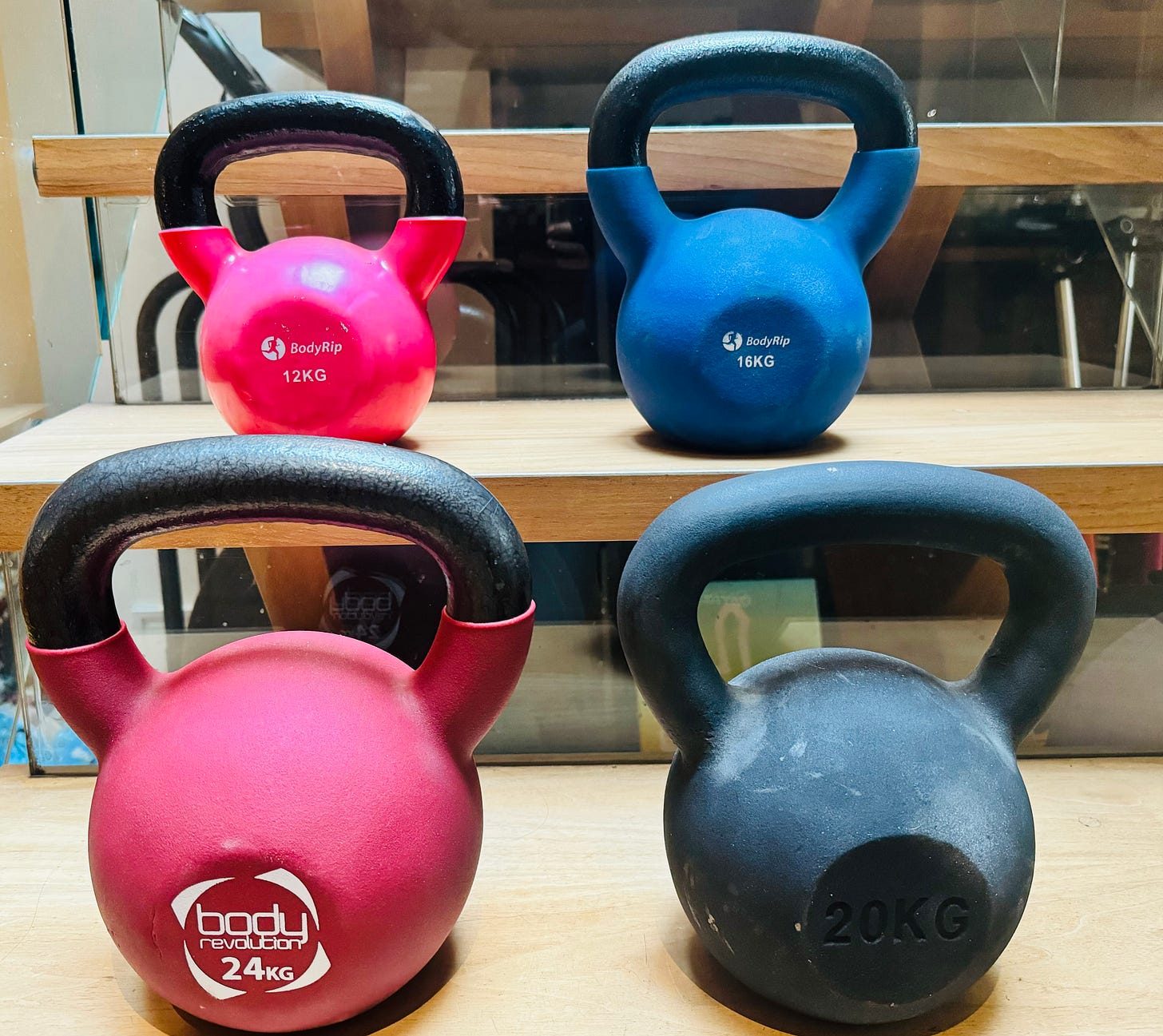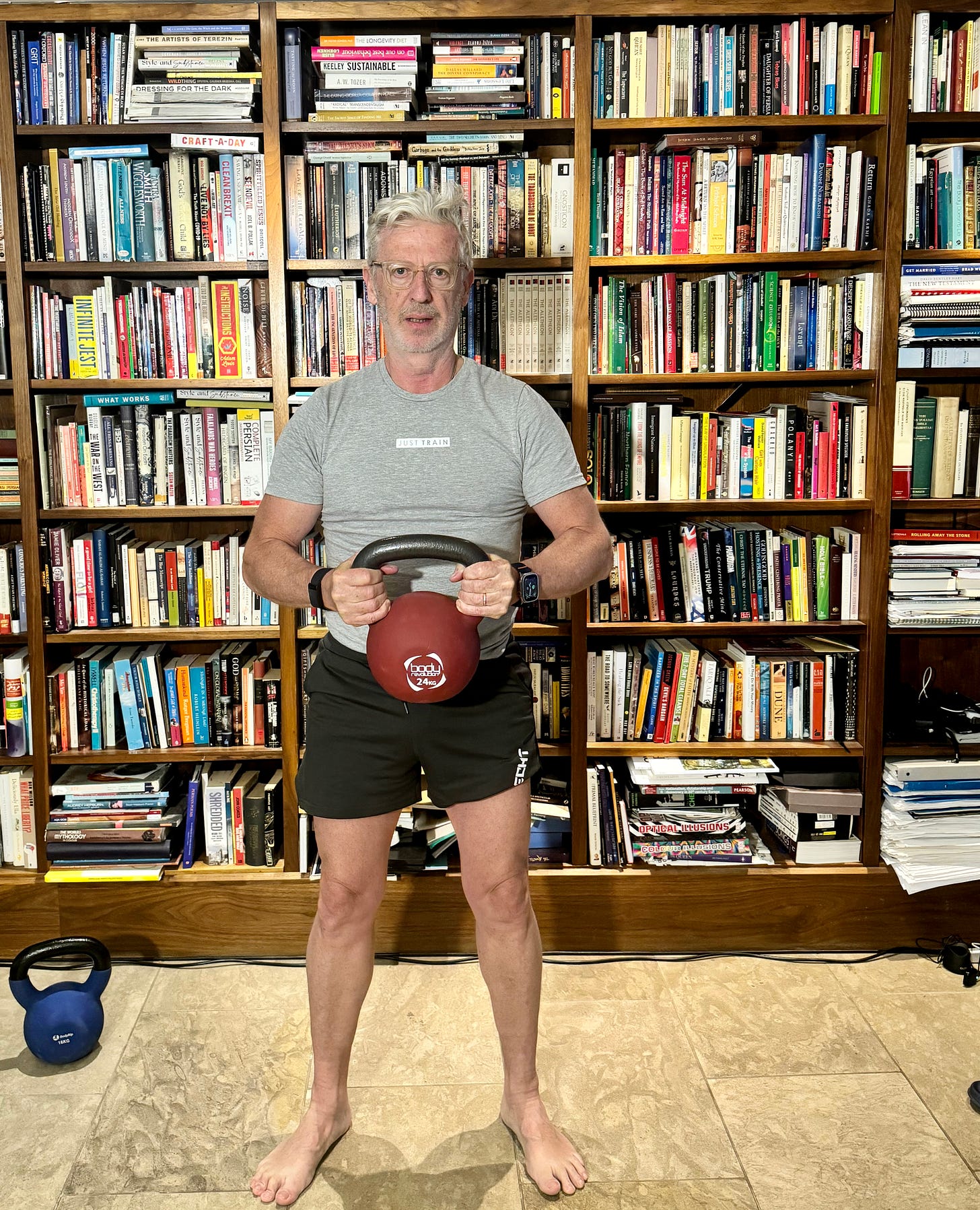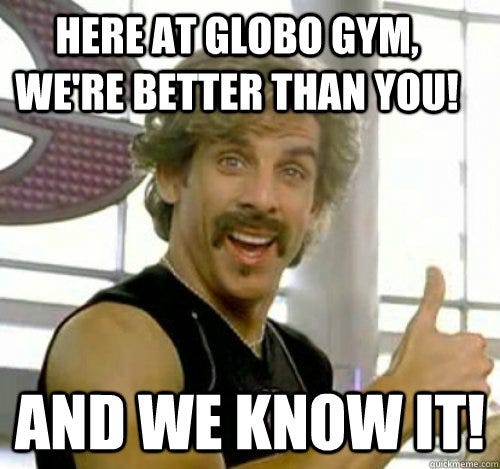Unlock Your Strength: 5 Reasons Why You Should Start Kettlebell Training
Learn how to transform your physique and improve your quality of life through strength training with kettlebells.
Last year, at the age of 59, following a period of minimal physical activity spanning almost 25 years, I experienced a compelling desire to break free from the stagnation I had been experiencing and improve both my physical health and well-being.
Reading Tim Ferris's book “The 4-Hour Body” upon its initial release in the UK in 2011, I recollected my admiration for his viewpoint on the straightforwardness and profound effects of kettlebell training. Just a mere 12 years later, I made the decision to give it a try!
That decision proved to be one of the best things I’ve done.
Engaging in kettlebell training sessions three to five times per week has significantly improved both my physical and mental health. This has led me to become a fervent advocate for these unorthodox yet remarkably efficient fitness tools.
What makes kettlebell training so special?
The primary emphasis is on core strength and the cultivation of a robust and supple physique, as opposed to the conventional approach of weightlifting that aims for increased strength and muscle mass.
Many men, and probably even more women, shy away from weight training due to concerns about developing bulging veins and bulky muscles.
Kettlebell training does not typically lead to a bodybuilding physique in either men or women, making it an attractive option for anyone seeking a strong and toned body.
The following are some of the primary advantages:
Enhances Core Strength: Numerous kettlebell exercises involve the activation of core muscles, which play a crucial role in upholding proper posture and stability. A robust core can also enhance balance and coordination.
Builds Lean Muscle Mass: Kettlebell exercises are beneficial for developing lean muscle mass and strength due to their nature as compound movements that activate multiple muscle groups concurrently.
It is important to note that without training most people experience a gradual decline in muscle mass, with a loss of approximately 3% to 5% per decade after the age of 30.
Consequently, it is a very good idea to establish a routine early in life that can aid in maintaining muscle mass. Kettlebell training has the capability to achieve this.
Burns Calories: Kettlebell workouts are a highly effective method for burning calories. Engaging in dynamic movements such as swinging, squatting, and pressing/pushing increase heart rate and enhance calorie expenditure. The development of lean muscle mass can also enhance metabolism, leading to increased calorie burn even during periods of rest.
Enhances Flexibility: Engaging in a variety of dynamic motions through kettlebell exercises can increase flexibility. This measure can aid in the prevention of injuries and improvement of overall athleticism.
Aids Coordination and Mobility: Kettlebell exercises mimic everyday movements, contributing to the improvement of coordination, mobility, stability, and overall functional fitness. It also contributes to grip strength, a factor associated with healthy ageing and mortality prediction.
What is the recommended approach to training?
I initially turned to YouTube and Instagram to find coaching and workout advice. There are some excellent videos available online, with most kettlebell coaches offering a variety of both complimentary and paid educational programmes.
Some of the coaches I like include:
Eric Spector (fabulous hair) — @ericdoeskettkebell on Instagram.
Pat Damiano — @patdamiano_ on Instagram
Joel del Rosario — @joellerblades on Instagram
Adam Gooch @asgooch on Instagram
Marcus Filly — @marcusfilly on YouTube
Brittany van Schravendijk — @kbfitbritt on YouTube
Lebe Stark — @lebestark-official on YouTube
Mark Wildman- @markwildman on YouTube
You can also, of course, seek advice from a fitness instructor at a gym. Kettlebells are commonly available in most gyms; however, they are frequently under-utilised or even avoided by gym-goers!
You can also follow the approach I took and purchase kettlebells through online retailers. They are considerably more cost-effective compared to a gym membership, requiring just one kettlebell to begin training.
I started my exercise regimen at home using a 12kg (26 lbs) kettlebell that I bought from Amazon. Starting out with a moderate and feasible weight is crucial to maintain proper form during the movement and to safeguard the body from potential harm.
Men, specifically, tend to choose weights and exercises that are either excessively heavy or overly challenging. It is more advisable to demonstrate humility and maturity, ensuring proficiency in fundamental movements before proceeding further. This constitutes an integral component of the training programme.
The initial exercise I took up was the kettlebell swing. My objective was to perform 100 consecutive kettlebell swings five days a week, in contrast to Ferris' recommendation of 75 swings 2–3 times per week.
Performing one hundred kettlebell swings typically takes approximately three minutes; so the lack of time in a busy day should not be used as an excuse!
As 12 kilograms is considered a relatively light weight for an adult male, I started a routine of performing 50 swings consecutively, five days per week. After a few weeks, the number of swings was increased to 75, and eventually to 100 swings.
I subsequently purchased a heavier 16kg (35 lbs) kettlebell - kettlebell weights increase in increments of 4kg - and began my routine with 20 swings, progressively adding 20 more swings until reaching the ability to execute 100 consecutive movements with correct form.
I consistently performed 100 swings, even if I was unable to execute them consecutively. Upon completing 70 consecutive swings, I would allow myself a brief rest period of 60 seconds before proceeding to execute an additional 30 swings.
During the 16kg swing period, I opted to integrate a variety of exercises into my workout regimen, alternating between upper and lower body routines on separate days. This led to an extension of the training session duration to approximately 30 to 40 minutes. I did this three to five days per week.
While adhering to an upper/lower body training split, the versatility of kettlebell (KB) training stands out as it offers a dynamic full-body and core workout. This flexibility contrasts with the more structured approach required when utilising dumbbells and weight machines. I also value the more obvious cardiovascular benefits of KB training, which stem from engaging in dynamic movements.
Over the recent months, there has been a progressive increment in the weight of the kettlebell I use and I am now moving up from a 24kg (53 lbs) kettlebell to a 28kg (62 lbs) kettlebell.
I don’t use the heaviest weight for all exercises; rather, I select a weight that enables me to perform 10-12 repetitions with correct form. Subsequently, the weight is incremented to the next level, and repetitions are executed until reaching failure.
Over time, as strength levels improve I increase the weight used and/or the number of repetitions performed. Similar to dumbbell training, the principle of progressive overload is applied to improve strength and overall fitness.
The key is to keep moving ahead. But do not rush things!
It is also essential to monitor one's progress.
Each day, I record the kettlebell workout and repetition program in my training journal for the following day. During the exercise routine, I monitor the number of repetitions/sets I accomplish for each exercise and take note of any difficulties or modifications that may be necessary.
You have to be honest with yourself. There is no one else checking your work.
The payoff from all of this has been a transformation in my physical fitness and body composition, resulting in a notable increase in both my strength and endurance levels. I have also observed a notable enhancement in my energy levels, mood, and productivity.
If you are interested in trying out kettlebell training, here are several exercises that I suggest you start with - there are plenty of videos available online to follow along to.
Kettlebell Swings: Stand with your feet positioned shoulder-width apart. Place the kettlebell a short distance in front of you. Maintain proper posture by keeping your back straight, hinging at the waist, and gripping the kettlebell handle (referred to as horns) with both hands. Swing the bell back between the legs and subsequently elevate it to chest height by engaging the hips and glutes to generate momentum, avoiding reliance on the arms and shoulders for propulsion. Perform the KB swing exercise to achieve the desired number of repetitions.
Halos: Grasp the kettlebell by the handle using both hands. Perform a circular motion around your head, alternating directions. I perform ten revolutions in one direction followed by ten in the opposite direction. It is crucial to select a weight that is manageable to avoid the risk of a heavy bell falling on your head or shoulders.
Bent Over Rows: Hinge at the hips while maintaining a straight back. Hold the kettlebell with one hand and perform a single-arm row by pulling it towards your hip. Repeat the same action with the opposite arm. I do twelve reps for each arm. I also position myself on a step to lower the kettlebell below feet level, creating a deficit row exercise that introduces additional movement and enhances the level of challenge.
Overhead Press: With the overhead press exercise, it is advisable to select a lighter weight. Begin by positioning the kettlebell at shoulder height. Lift the weight overhead, ensuring full extension of your arm and maintaining a straight wrist position. After finishing the designated number of repetitions, proceed to perform the exercise with the opposite arm.
Deadlift: To perform a deadlift, place the kettlebell between your legs and grasp the handle with both hands. Maintain a straight back while bending your knees slightly into a minimal squat position. Engage your glutes and concentrate on your core muscles when lifting the kettlebell, elevating your body with extended arms. Repeat according to the predetermined repetition range.
Goblet Squat: Goblet squats involve standing with a straight back and engaged muscles while holding the kettlebell close to the chest with both hands. Execute squats with maximal depth, ensuring proper alignment of the back, engagement of the core muscles, and alignment of the knees with the feet. I perform three sets of 12 repetitions using the maximum weight available.
Reverse Lunge: Perform reverse lunges by holding the kettlebell with both hands in front of your chest at shoulder level. Step back into a lunge while alternating your legs. I utilise heavy weights for this particular exercise.
Remember to start with a manageable kettlebell weight and focus on developing proper form. There is no rush!
Increase the weight as your strength improves and you become more skilled with the movement.
I also recommend integrating training sessions with new exercises or modifications to existing routines.
Consistency plays a crucial role in effectively mastering a movement or complex skill, as opposed to frequently altering it.
However, incorporating a diverse range of exercise routines over time is valuable not only for maintaining steady progress but also for subjecting the muscles and body to varying types of stress and movement.
And experimenting is fun.
It really is that simple. I hope you decide to give kettlebells a go.
You won’t regret it.
Feel free to get in touch if you have any questions I might be able to help you with.
Swing more, worry less!







